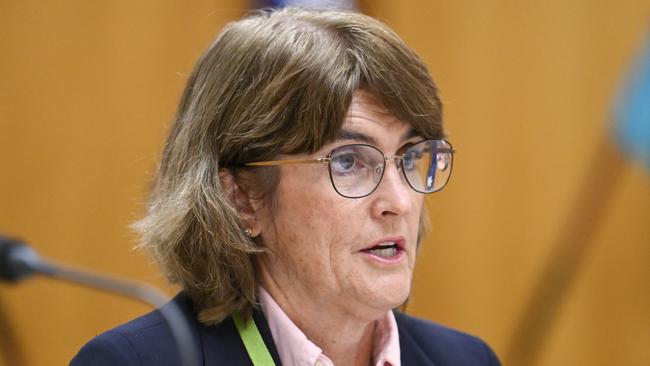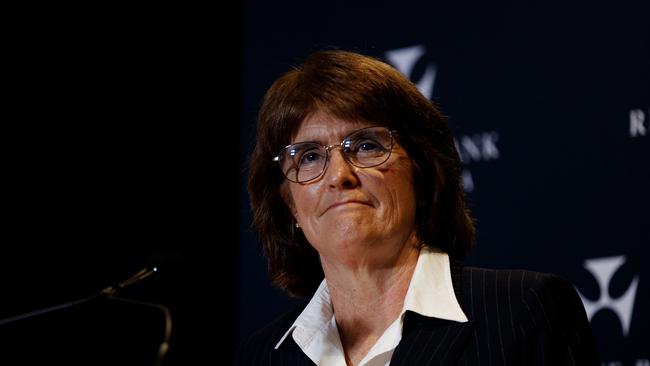RBA upbeat on China’s willingness to do what it takes on growth
Two high-profile visits to China by senior Australian central bank officials have returned a verdict of confidence that the Middle Kingdom remains well-placed to ride out the upheavals emerging from Washington’s haphazard approach to trade policy.

Two high-profile visits to China in recent months by senior Australian central bank officials have returned a verdict of confidence that the Middle Kingdom remains well-placed to ride out the upheavals emerging from Washington’s haphazard approach to trade policy.
Against the backdrop of a further tumble in forecasts for growth in the global economy, the governor of the Reserve Bank of Australia, Michele Bullock, spent three days in China last week. Her visit came hot on the heels of a trip to China by Deputy Gov. Andrew Hauser in April.
While the intelligence-gathering exercise with the likes of the People’s Bank of China and business groups in Beijing were planned long before the Trump administration ramped up global trade tensions, that proved to be timely, with Hauser in China in the days immediately after Trump’s Liberation Day on April 2.
The cautious but positive findings that have emerged from the visits are expected to help steer decision making around interest rates at the RBA for some time.

The RBA is upbeat on China, forecasting annual growth of 4.8% in 2025 and 4.4% in 2026 in its recent statement on monetary policy, a view the central bank knows is toward the upper end of market consensus.
The upbeat bets are based on the view that Beijing will do whatever it takes to keep the fire of growth burning bright, and that it still has the policy firepower to deliver growth at target despite concerns about a build-up of debt and the fragility of its property sector.
Chinese officials are also confident that exporters will be able to trade through the current uncertainty, optimistic that the final level of tariffs imposed won’t be draconian, and that China’s trade reliance on the U.S. has been falling over recent years, with exporters seeking greater diversification.
There’s plenty at stake in the RBA’s optimism for Australia, given that China accounts for around one-third of its total exports. Any softening in Chinese demand would register immediately on the streets of Sydney and in Canberra’s budget projections.
Australia may yet reap a windfall from the trade uncertainty, with its stable institutions and relatively predictable government policy platforms now looking more alluring than ever before.
It also helps enormously that recent trade disputes between Canberra and Beijing have been largely ironed out, leaving firms to operate more or less free from impediments.
The RBA’s optimism on China, which is conditional on the understanding that the outlook for global growth could darken further at any moment, bodes well for a controlled reduction in the official cash rate this year, rather than a rush to remove what’s left of the restrictiveness in current policy settings.
There’s some confusion in financial markets at the moment about what the RBA believes is a neutral OCR, given what some economists claim has been mixed messaging on the topic.
But it’s a good bet that the RBA feels a neutral OCR is not too far away from the current 3.85%, probably somewhere between 3.0% and 3.50%.
The estimate implies the RBA will continue to lower interest rate over coming months, but won’t go for the big stick of a 50-basis-point cut.
Again, that’s on the understanding that relations between Washington and Beijing don’t worsen significantly in the interim.
A 50-basis-point cut in the OCR was debated at the RBA’s May policy meeting, but the board discussion was mostly theoretical. The central bank opted for the more prudent option of a 25-basis-point cut.
With Australia’s economy struggling to register a pulse in the first quarter and uncertainty indexes topping out around the world, a further interest-rate cut in July, the third in the current cycle, is far more likely than not.
The RBA is upbeat on China and largely satisfied that inflation is back within target. While there are pockets of concern around the tightness of the job market, it’s the central bank’s fear that the global downturn could be deep enough to keep interest rates coming down in the second half of the year.
james.glynn@wsj.com





